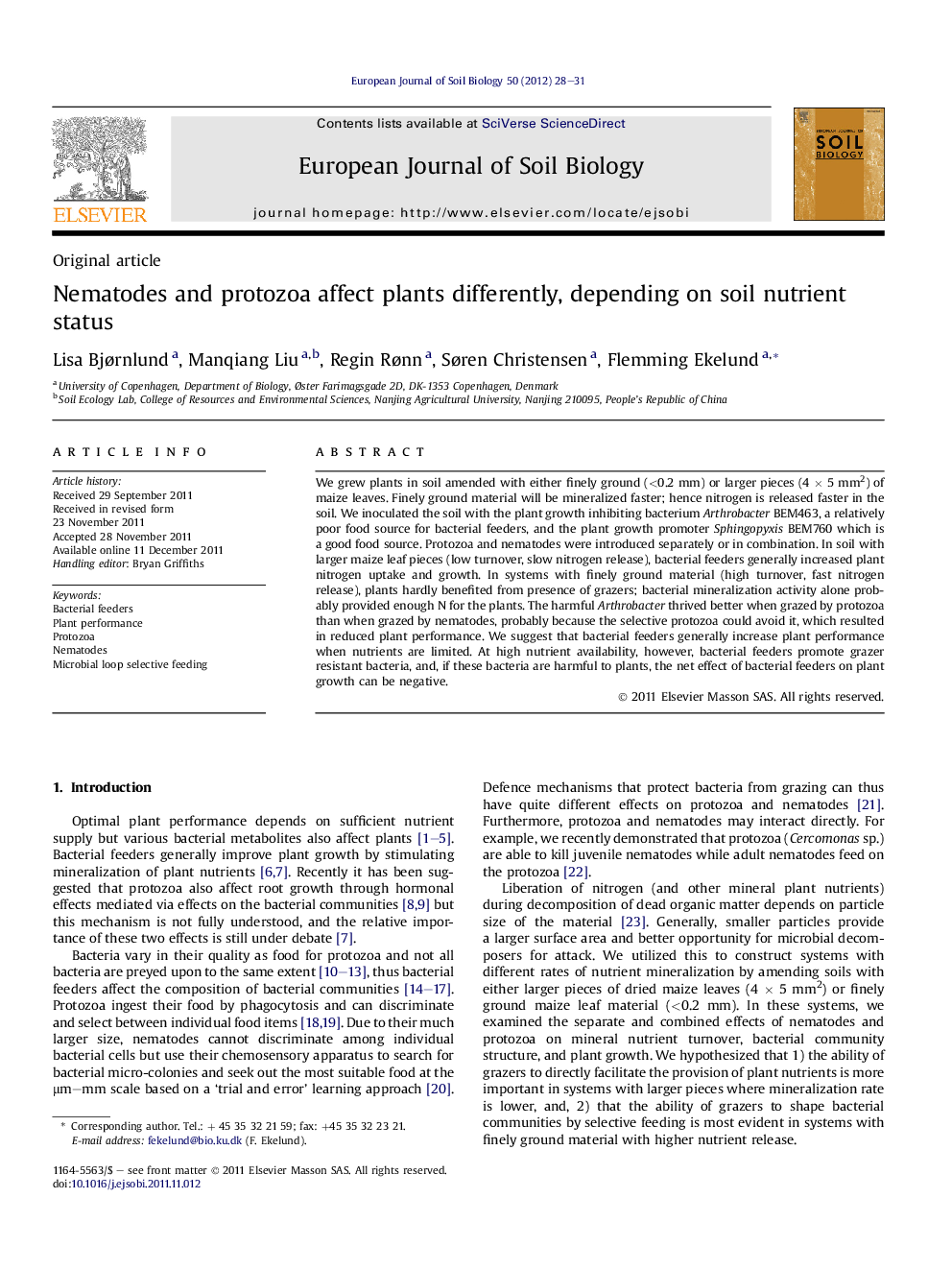| Article ID | Journal | Published Year | Pages | File Type |
|---|---|---|---|---|
| 4392023 | European Journal of Soil Biology | 2012 | 4 Pages |
We grew plants in soil amended with either finely ground (<0.2 mm) or larger pieces (4 × 5 mm2) of maize leaves. Finely ground material will be mineralized faster; hence nitrogen is released faster in the soil. We inoculated the soil with the plant growth inhibiting bacterium Arthrobacter BEM463, a relatively poor food source for bacterial feeders, and the plant growth promoter Sphingopyxis BEM760 which is a good food source. Protozoa and nematodes were introduced separately or in combination. In soil with larger maize leaf pieces (low turnover, slow nitrogen release), bacterial feeders generally increased plant nitrogen uptake and growth. In systems with finely ground material (high turnover, fast nitrogen release), plants hardly benefited from presence of grazers; bacterial mineralization activity alone probably provided enough N for the plants. The harmful Arthrobacter thrived better when grazed by protozoa than when grazed by nematodes, probably because the selective protozoa could avoid it, which resulted in reduced plant performance. We suggest that bacterial feeders generally increase plant performance when nutrients are limited. At high nutrient availability, however, bacterial feeders promote grazer resistant bacteria, and, if these bacteria are harmful to plants, the net effect of bacterial feeders on plant growth can be negative.
► Bacterial grazers affect plant growth differently at different soil nutrient status. ► At low nutrient status grazers generally increase plant nitrogen uptake and growth. ► At high nutrient status, protozoa can promote plant inhibiting bacteria.
